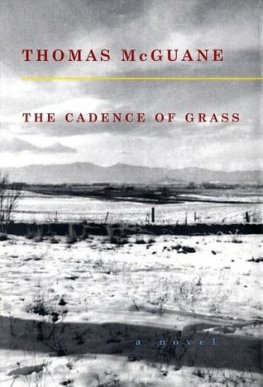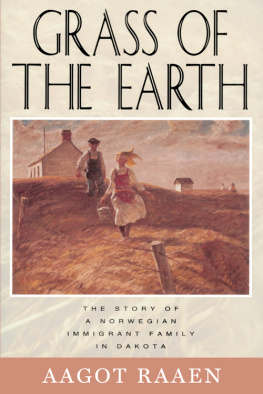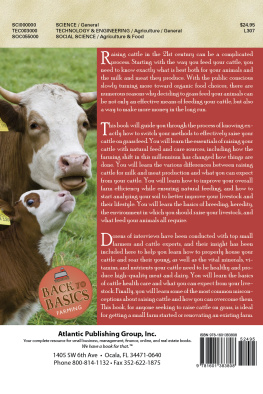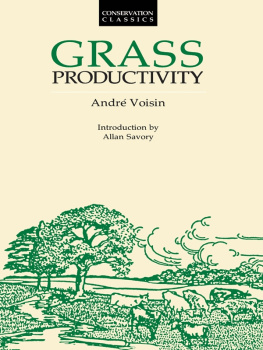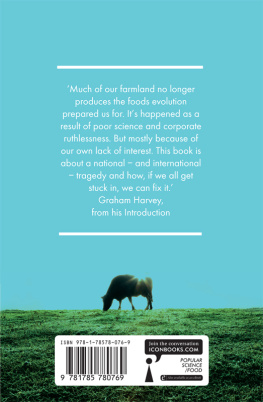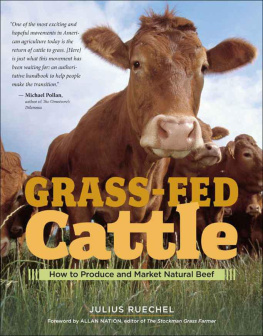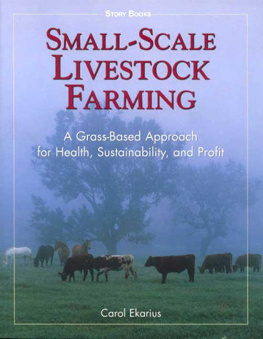

James Fisher, M.A.
John Gilmour, M.A., V.M.H.
Sir Julian Huxley, M.A., D.SC., F.R.S.
Sir L. Dudley Stamp, C.B.E., D.LITT., D.SC.
PHOTOGRAPHIC EDITOR
Eric Hosking, F.R.P.S.
The aim of this series is to interest the general reader in the wild life of Britain by recapturing the inquiring spirit of the old naturalists. The Editors believe that the natural pride of the British public in the native fauna and flora, to which must be added concern for their conservation, is best fostered by maintaining a high standard of accuracy combined with clarity of exposition in presenting the results of modern scientific research

The New Naturalist series has already covered many facets of the interrelationship between man and nature, and the Editors are glad to be able to add a further volume of this kind to the series. The grass family has a strong claim to be regarded as the most important to man in the whole plant kingdom, and we are fortunate to have persuaded Professor Ian Moore, the Principal of Seale Hayne Agricultural College in Devonshire, to draw on his unrivalled knowledge of grasses and their utilisation for the writing of the present volume. His special interest is the use of natural and seeded grass pastures for the feeding of livestock. Striking advances have been made in recent years in the improvement of such pastures and Professor Moore has naturally dealt very fully with this vital link in the feeding of the human race; but he also covers that other equally important role of the grass family in our economy, the cultivation of cereal crops for the production of grain. Grass lawns and playing fields form a centre-piece in most British gardens and public parks, and Professor Moore has a chapter on these, but the horticultural value of grasses as ornamental plants in herbaceous borders and woodland gardens is less well known. Professor Moore touches on these and many other unfamiliar uses for the ubiquitous grass family, but grass as fodder is his central theme and his chapters on the historical development of our pastures, their economic significance, and their improvement through the selection and breeding of new strains of wild species make a fascinating story.
Professor Moore does not give detailed descriptions of our 160 or so wild British grasses, as these are easily available in Dr. C. E. Hubbards excellent Penguin volume, but his keys to the commoner species will enable anyone with a minimum of botanical knowledge to identify these both in flower and from vegetative characters.
Grasses do not lend themselves to coloured illustrations, so we have confined ourselves to a frontispiece of Drers superb study, and we hope readers will feel that the fine series of black-and-white photographs adequately represents the family and its contribution to the British landscape.
THE EDITORS

Our life is so inextricably interwoven with that of the grasses which grace our fields that the study of grassland is both fascinating and intriguing to all who possess an inquiring mind, be they born and bred in towns or sons of the soil. What is more, the management of the grass sward for farming, sport or pleasure offers a real challenge to skill, in the feeding of plants and the tending of them throughout their life, as well as to ones understanding of technical developments in the realm of botany, chemistry, engineering and economics.
Where should we be without grass? Our life is so dependent on this humble, oft-neglected plant that we must appreciate its real significance in the nations economy. Without grass our country would lose its scenic beauty, so many sports their colourful background and in scores of ways our lives would be changed. The ordinary grass field one sees every day on any farm, the sports ground with which one is so familiar at school or college or in the wider arena of national games, the small patch of green which graces the front or back of so many English homes, is a complex community of plants each displaying likes and dislikes, and different reactions to varying treatment, yet supplying an essential need whether on the world or simply the individual scale.
For over thirty years my special interest has been grassland and when I was asked by the Editors of the New Naturalist Series to present the story of grassland for their readers, I accepted with alacrity.
In writing such a book one must draw from many sources of knowledge and from many writers of the past and I hope I have made due acknowledgements to the many who have contributed to our understanding of grassland. I am deeply indebted to my own colleagues in College for their ready help and guidance and particularly to Mr. K. C. Vear, Professor H. T. Williams and Mr. R.J. Halley. Not being a botanist, I have had much assistance from Mr. Vear, Head of the Biology Department and as I am not an economist, Professor Williams, formerly Head of Agricultural Economics and now of the University of Aberystwyth, has been of material assistance with Chapter 16; Mr. Halley has given me invaluable assistance with the more practical aspects of grassland husbandry, and Mr. R. W. Younger with Chapter 18. To Mr. D. J. Barnard I am very indebted for help with the proofs.
To the Editors I am grateful for their help in the preliminary stages of writing the book, while to Mr. John Gilmour I am especially indebted for his most valuable criticism and guidance at all stages of preparation. While I hope the book will have a wide appeal generally, I am particularly hopeful that the many schools throughout the country now using a school plot or a school farm or maybe a neighbours farm as a living medium for teaching, will find it of value. To the many students now attending the recently instituted day-release classes organised by County Education Authorities in agriculture, to those at Farm Institutes and to all students gaining practical experience prior to College or University courses I hope this book will serve as encouragement to a deeper appreciation of the value of the grass crop and an added incentive to further investigation and wider reading.
THE ROLE OF GRASS IN NATIONAL LIFE

The significance of grass in the life of man was recognised in earliest times but the distractions of modern life in great cities and the speed with which man now passes through the countryside have caused him to underestimate its importance.
Wherever one travels throughout the British Isles grass is to be seen. Our temperate climate and high rainfall, especially in the western areas, favour the growth of grass which in some parts has a growing season of nine months a year, from March to November. Grassland farming, therefore, is our predominant type of farming, and the efficient production and utilisation of grass are obviously of the greatest economic significance to British agriculture. Agriculture is still Britains largest single industry and the annual turnover accounts for about 5 per cent of the gross national product thereby exceeding coal (3.2 per cent) and iron and steel (2.8 per cent) which are the next largest industries in gross output. In turn grass, which is our most important crop, makes the greatest single contribution to the farming income. This apart, grass is of prime importance for leisure hours, and our playing fields, which are so much a part of our national life, depend upon grass.


